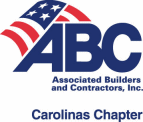In a pair of recent decisions, the N.C. Court of Appeals has clarified that an “accident“ or “occurrence” may arise from faulty construction, ruled that the “your work” exclusion is not so broad as to exclude from CGL coverage damage to property other than the faulty work product itself, and held that lost revenue and other consequential damages may be recoverable against a CGL policy, even if such damages arise from the defective construction itself. Taken together, the two opinions narrow the reach of the “your work” exclusion in North Carolina, and should preclude the type of firestorm that engulfed the contracting community, insurance industry and legislature in South Carolina earlier this year, when its Supreme Court came to virtually opposite legal conclusions.
You’ll find a full discussion and analysis of both decisions, including their potential impact on the construction industry here in North Carolina, after the jump.
PART I: The Builders Mutual decision
The first opinion, Builders Mutual Insurance Co. v. Mitchell, issued by the COA in April, involved a claim by one insurance carrier against another arising from faulty repair work at a residence on Figure Eight Island. Homeowner had paid First Repair Contractor more than $4.3 million (!) over a six-year period (!!) before concluding that the repair work was not being performed in a workmanlike manner. Second Repair Contractor discovered that the original repairs had caused additional damage to both interior and exterior portions of the residence. Homeowner sued First Repair Contractor for breach of contract, among other claims, and Insurance Carrier #2, whose CGL policy covered First Repair Contractor during the last three years of the repairs, defended First Repair Contractor under a reservation of rights, ultimately paying Homeowner’s claim at mediation.
Prior to settlement, Insurance Carrier #2 brought a declaratory judgment action against Insurance Carrier #1, whose CGL policy had covered First Repair Contractor during the first three years of the repair work. Insurance Carrier #2 sought contribution from Insurance Carrier #1 of one-half of the defense costs and one-half of the settlement of Homeowner’s claim. In response, Insurance Carrier #1 argued it had neither a duty to defend nor indemnify First Repair Contractor on two principal grounds: (1) the alleged damages were the result of faulty workmanship and therefore did not constitute an “occurrence” under the policy; and (2) even if the damage constituted an “occurrence,” the “your work” exclusion contained in the CGL policy issued by Insurance Carrier #1 excluded the alleged damages from coverage. These arguments prevailed at summary judgment, and Insurance Carrier #2 appealed.
On appeal, the Court of Appeals (“COA”) first had to determine whether damages arising from faulty work could constitute an “occurrence” under the policy. The COA noted generally that a liability insurance policy is not a performance bond guaranteeing faithful performance by the insured, that the quality of an insured’s work is a “business risk” within the insured’s own control, and that generally a CGL policy does not provide coverage for claims arising out of the insured’s failure to conform to plans and specifications. As a result, a CGL policy typically does not cover damages for the cost of repairing faulty workmanship itself.
However, Homeowner’s claim included damage not only to the faulty work itself, but also to property that Insurance Carrier #2 argued was previously undamaged. On these facts, the COA ruled that an “occurrence” as defined by a CGL policy could be an accident caused by or resulting from faulty workmanship, so long as the damages sought were to property other than the defective work product itself. The fact that First Repair Contractor may have performed negligently did not prevent coverage, since whether any given event is an “accident” constituting an “occurrence” depends on whether the insured intended or expected the result. In this case, the COA found no evidence that First Repair Contractor intended or expected the damage to previously undamaged property alleged by Insurance Carrier #2. Accordingly, the COA held that Insurance Carrier #2 had alleged sufficient facts to bring the claim within the scope of the CGL policy issued by Insurance Carrier #1, and that a trial would be required to determine if Insurance Carrier #2 could prove those facts by a preponderance of the evidence.
The COA also addressed whether the “your work” exclusions contained in sections I.A.2.j and I.A.2.k of the CGL policy issued by Insurance Carrier #1 precluded coverage as a matter of law. The Court construed “that particular part” of property on which the insured was working narrowly, holding that the exclusionary language did not apply to previously undamaged property that was not part of the insured’s work. Since the allegations of Insurance Carrier #2 referred to damages done to property other than the faulty work itself, the COA held that Insurance Carrier #1 had not proven applicability of the “your work” exclusions as a matter of law; accordingly, a trial would be required to determine to what extent damage to previously undamaged property occurred.
The Builders Mutual decision has several implications for the North Carolina construction industry. First, since insurance coverage may exist when previously undamaged work is damaged by faulty work, general contractors and subcontractors should put their carriers on timely notice whenever an owner alleges a defective work issue. This is a particularly crucial step because as long as some of the property damage alleged by the owner represents damage to previously undamaged work, the carrier’s duty to defend its insured will be triggered, so that the contractor may not have to go out-of-pocket to defend the claim. Second, the decision affirms prior rulings holding that CGL policies are not performance bonds; as a result, an owner who wants a more robust guarantee of faithful performance than a CGL policy can offer must require its general contractor to obtain a performance bond – and, of course, be willing to pay bond premiums as a cost of the work. Third, the decision provides some much-needed clarity and certainty on an issue that has been extremely contentious for our neighbors to the south. Earlier this year, South Carolina’s Supreme Court held in Crossmann Communities of North Carolina, Inc. v. Harleysville Mutual Insurance Co. that there was no coverage for property damage arising from faulty work. Specifically, the Crossmann decision held that damage to previously undamaged property was merely a “natural and expected consequence” of an insured’s negligent performance, and therefore such an event could not constitute an “occurrence” under the applicable CGL policy. The decision set off a firestorm within the contracting community that ultimately led to legislative action establishing a default definition for an “occurrence” where the carrier fails to include one in its policy; part of this default definition defines “occurrence” as “property damage or bodily injury resulting from faulty workmanship, exclusive of the faulty workmanship itself.”
Part II: Alliance Mutual decision
In Alliance Mutual Insurance Co. v. Glen Dove d/b/a Dove’s Welding, issued by the COA in August, Owner contracted with Contractor/Insured to repair a broken elevator belt in a grain elevator. As the work was nearing completion, a duct ignited, causing an explosion in the elevator. Owner brought an action against Contractor/Insured, seeking to repair Contractor’s faulty work, repair damage to property upon which Contractor performed no work, and obtain business interruption and lost revenue damages. Contractor/Insured forwarded Owner’s complaint to its CGL Insurance Carrier, who initially provided a defense under a reservation of rights; later, Insurance Carrier initiated a declaratory judgment action against Contractor/Insured in an attempt to avoid both a duty to defend and liability coverage.
On cross-motions for summary judgment, the trial court held that the CGL policy in question did not cover damages to the defective work, but did cover both the damage to property upon which Contractor/Insured had performed no work, as well as the economic losses claimed by Owner. On appeal, the COA evaluated a “your work” exclusion clause at issue, which excluded from coverage “property damage to that specific part of any property that must be restored, repaired, or replace because of faults in your work.” Citing to decisions from other jurisdictions, to prior North Carolina precedent construing insurance policies in favor of the insured, and to the Builders Mutual decision discussed above, the COA held that the trial court did not err in limiting the exclusion’s reach to only that part of the work defectively performed by Contractor/Insured; damage to other property was not excluded.
Turning to the claim for economic damages, the COA noted that Owner’s business interruption claim arose from damage to the faulty work itself. Nonetheless, the COA held that if Insurance Carrier:
had wanted to exclude loss of use and consequential damages flowing from damage to specific property that the insured was working on, it could have explicitly stated so in the exclusion clause. Since [Insurance Carrier] had failed to do so, the trial court properly concluded that the exclusion clause only excludes damages to the ‘specific part of any property that must be restored, repaired, or replaced because of faults in your work[.]’
The Alliance Mutual decision therefore stands for the proposition that the “your work” exclusion may not extend to business interruption and other economic losses asserted against an insured, even where such damages are directly connected to the insured’s faulty work. Taken together with the Builders Mutual decision, there can be no doubt that the appellate courts in North Carolina have adopted a rather narrow view of the “your work” exclusionary language currently appearing in CGL policies, leaving me to surmise two things: (1) we can expect owners and insured contractors to continue asserting that CGL policies provide coverage for economic losses; and (2) the insurance industry may adapt, likely by modifying the “your work” exclusionary language so as to exclude coverage for economic losses.







